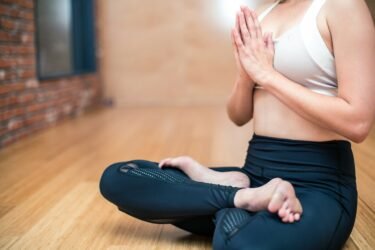Introduction
In today’s society, physical appearance significantly shapes how individuals perceive themselves and others. How we look can profoundly impact our self-esteem, body image, and overall mental well-being. This correlation between physical appearance and psychological impact is complex and multifaceted, influenced by societal standards, cultural norms, and individual experiences. In this article, we will delve into the relationship between physical appearance and its psychological implications, exploring the factors contributing to body image perception, the consequences of negative body image, and strategies for fostering a positive self-image.
Section 1: Understanding Body Image
1.1 Definition and Components of Body Image
The concept of body image encompasses an individual’s personal interpretation, cognitive processes, and emotional responses toward their physical appearance. It encompasses both how we see ourselves and how we believe others perceive us. Body image is influenced by factors such as body size, shape, weight, skin color, features, cultural ideals, and societal pressures.
1.2 Formation of Body Image
A complex interplay of biological, psychological, and sociocultural factors shapes body image. Biological factors include genetics, hormonal influences, and individual differences in body composition. Psychological factors involve self-perception, cognitive processes, and personal experiences. Sociocultural factors encompass media, advertising, family and peer influences, and societal beauty standards.
1.3 Improving the Perception of Body Image
Individuals who struggle with a negative body image may feel powerless because they believe that society dictates their worth, but much can be done to change how we think and feel about ourselves. With conscious effort, individuals can develop a positive self-image and reduce feelings of insecurity and inadequacy.
Numerous individuals have sought to improve their physical appearance in specific areas, such as the face, breasts, buttocks, genitals, or abdomen, by resorting to injecting foreign substances. However, these practices have gone awry, as various substances, including vegetable oil, synthetic oil, baby oil, certain petroleum-based substances, and silicone, have been injected into the body – despite not being intended for such a purpose. Besides, having silicone injection in buttocks can also lead to severe health complications. However, despite all of this, physical appearance is still believed to be an important factor in people’s perceptions.
Dr. Antun is a renowned specialist in removing silicone injections, with a reputation that extends across the country. He has a wealth of experience in treating this challenging condition. We recommend consulting HD Esthetique for details.
Section 2: The Psychological Impact of Negative Body Image
2.1 Body Dysmorphic Disorder
Body Dysmorphic Disorder (BDD) is a psychological condition that causes individuals to obsess over their perceived physical flaws, even if they have no physical abnormality. People with BDD often experience low self-esteem and distress, leading them to engage in compulsive behaviors to conceal or modify their flaws. This disorder can greatly impact one’s ability to function on a daily basis and lead to depression and social isolation.
2.2 Eating Disorders
Negative body image can contribute to developing eating disorders such as anorexia nervosa, bulimia nervosa, and binge eating disorder. These disorders involve distorted eating behaviors and attitudes driven by a desire to attain or maintain a specific body shape or weight. Eating disorders impact physical health and have severe psychological consequences, including anxiety, depression, and a distorted sense of self-worth.
Section 3: Strategies for Fostering a Positive Body Image
3.1 Self-Acceptance and Self-Compassion
Promoting self-acceptance and self-compassion is crucial in fostering a positive body image. This involves challenging negative self-talk, embracing one’s unique qualities, and practicing self-care. Developing a compassionate and non-judgmental attitude towards oneself can lead to greater self-acceptance and overall well-being.
3.2 Media Literacy and Critical Thinking
Being mindful of the messages conveyed by media and advertising is essential in cultivating a positive body image. Developing media literacy skills and critical thinking allows individuals to challenge unrealistic beauty standards and understand the manipulative nature of image editing and the portrayal of idealized bodies.
3.3 Building a Supportive Social Network
Surrounding oneself with a supportive social network can promote a positive body image. Cultivating relationships with individuals who value inner qualities, diversity, and individuality rather than solely focusing on physical appearance can help foster a sense of acceptance and belonging.
Section 4: The Influence of Social Media on Body Image
In recent years, the rise of social media platforms has significantly impacted body image perception. Social media platforms are saturated with images that often promote unrealistic beauty standards, showcasing flawless bodies and filtered appearances. Constant exposure to these curated and idealized images can increase body dissatisfaction and negative self-perception.
4.1 Comparisons and FOMO (Fear of Missing Out):
Social media platforms create an environment of constant comparison, where individuals are exposed to carefully curated images of others’ lives and appearances. This comparison can fuel feelings of inadequacy and lead to a negative body image. The fear of missing out (FOMO) on the idealized experiences portrayed on social media can contribute to dissatisfaction with one’s appearance.
4.2 Cyberbullying and Body Shaming:
Social media platforms can also become breeding grounds for cyberbullying and body shaming. Negative comments, criticisms, and online harassment related to physical appearance can harm an individual’s self-esteem and body image. The anonymity and distance afforded by social media can amplify the harmful effects of such behaviors.
Section 5: Seeking Professional Help and Support
For individuals struggling with negative body image and its psychological impact, seeking professional help and support is crucial. Several avenues exist to address body image concerns and promote mental well-being.
5.1 Therapy and Counseling:
Therapy and counseling provide a safe space to explore and address the underlying psychological factors contributing to negative body image. Cognitive-behavioral therapy (CBT) and other evidence-based approaches can help individuals challenge negative thoughts, develop healthier beliefs about their bodies, and cultivate self-acceptance.
5.2 Support Groups and Body-Positive Communities:
Joining support groups or engaging with body-positive communities can give individuals a sense of belonging and support. These groups offer a space to share experiences, exchange coping strategies, and receive validation and encouragement from others who have faced similar challenges.
5.3 Education and Awareness Campaigns:
Education and awareness campaigns focused on body positivity, media literacy, and promoting diverse representations of beauty can help combat the negative impact of societal beauty standards. By fostering a culture that celebrates individuality and promotes inclusivity, we can create an environment that values all body types and fosters positive body image.
Conclusion
Understanding the correlation between physical appearance and its psychological impact is essential in navigating the complexities of body image perception. Individuals can proactively improve their mental well-being by recognizing the factors that shape body image, such as social media influence, and implementing strategies for fostering a positive self-image. Seeking professional help and support, such as therapy and engagement with supportive communities, can be crucial in developing a healthy body image and promoting overall psychological health. Embracing body positivity, promoting diversity, and challenging societal beauty standards are vital steps in creating a more inclusive and accepting society where individuals can thrive with a positive body image and enhanced self-esteem.





 8 Ways to Break into Management in Healthcare
8 Ways to Break into Management in Healthcare